Eradicate Eliminate - Get Rid of Wasps and Bees
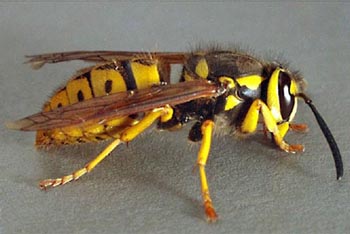
Yellowjackets
Yellowjackets get their name from their typical black and yellow color pattern. They can be found worldwide with about 16 species in the United States. The adults are represented by workers which are sterile females, queens, and males which come from unfertilized eggs and usually appear in late summer. Their closest relatives are ants.
Typically, only inseminated queens overwinter, and they do so in sheltered areas. The founding queen, the workers, and the males all die. The old nest is not reused the next year.In the spring, depending on the species, she will usually select a subterranean or aerial nesting site. Most yellowjackets are ground nesting.
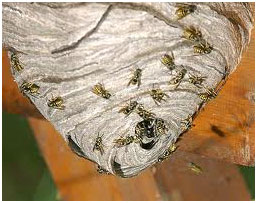
However, the German yellowjacket usually nests in buildings, the Western yellowjacketoccasionally nests in buildings, and the aerial yellowjacket commonly nests in shrubs, bushes, on houses, sheds, etc. Yellowjackets are slow to sting unless the nest entrance is approached, then they are very aggressive. Each can sting several times. Some people become hypersensitive to the stings and future stings could be life threatening.
Yellowjackets are considered beneficial because their food consists mainly of other insects, often pest species. However, if their nest is close to occupied areas, or within structures, treatment is warranted.
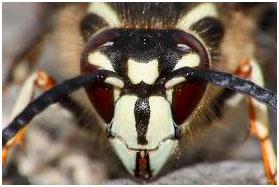
Baldfaced Hornets
Baldfaced Hornets are large black and white yellowjackets. They get their name from the mostly black color, but mostly white face. The hornet part is because of its large size and aerial nesting. Baldfaced Hornets are found throughout the United States.
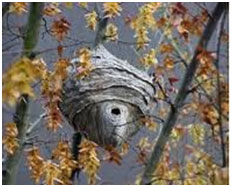
Like other yellowjackets, only inseminated queens over winter. Nest sites can vary frum shrubs or vines at ground level to 65 ft or higher in trees. Nests may also be built on overhangs, utility poles, houses, sheds, or other structures. Nearly all nests are constructed in exposed areas.
Often nests in vegetation are not discovered until the leaves fall at the end of the season. They also do not reuse the nest the next year. Baldfaced Hornets also are considered beneficial by helping control many pest insect species ... including yellowjackets.
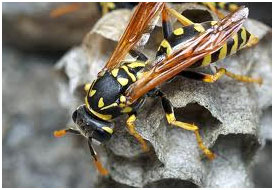
Paper Wasps
Paper wasps get their name from the paper-like material of which they construct their nests, as do yellowjackets and baldfaced hornets. Some call them umbrella wasps because of the shape of their nests.
Paper wasps are semi-social. They exist in small colonies. Overwintering inseminated queens start building nests in the spring and are then joined by other inseminated queens which assist in the nest building and maintenance.
These secondary queens become workers and relegate the egg laying to the founding queen. However, if the founding or dominant queen dies, one of the secondaries can assume the egg laying to ensure nest survival.
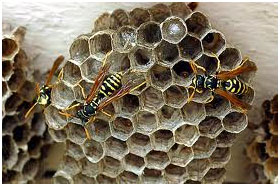
The nests are flat, single layer comb with the cells facing down. The comb is never enclosed like yellowjacket nests, but is totally exposed. It is suspended from a long single pedicel. This apparently helps in protecting the nest from predators such as ants.
They will construct these nests porch ceilings, the top member of window and door frames, soffits, eaves, attic rafters, deck floor joists, railings, etc., almost anywhere you can think of.
Paper wasps are considered beneficial insects, helping to control many insect pests. Their main diet is of caterpillars. They are typically extremely docile unless their nest is disturbed. If treatment is warranted, it is essential that the adults be killed or they will rebuild quickly.





 Follow
Follow


